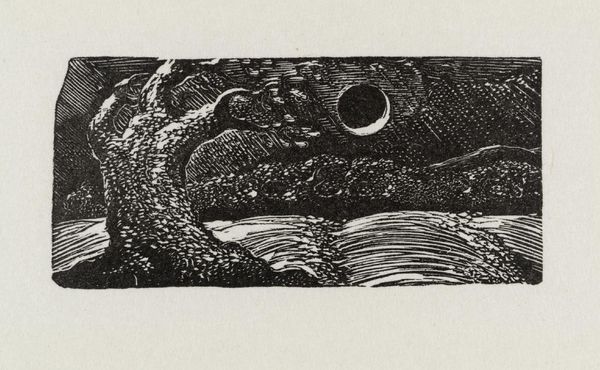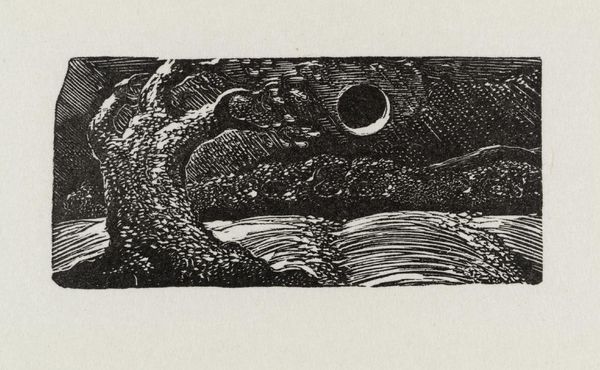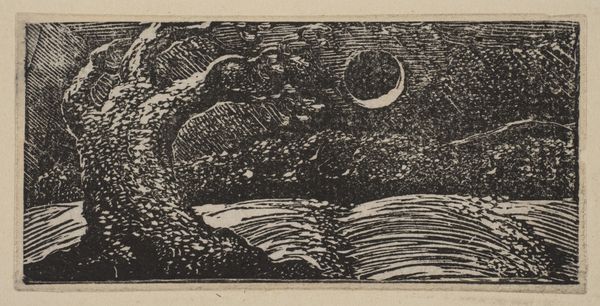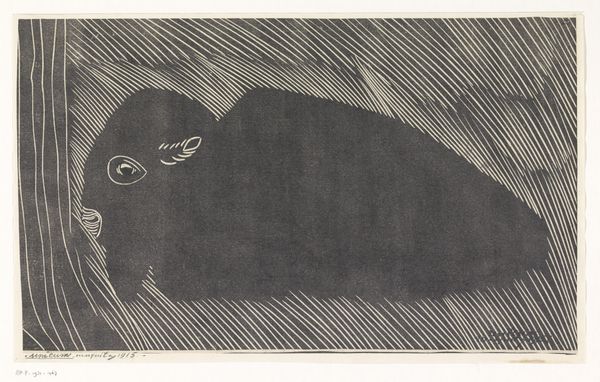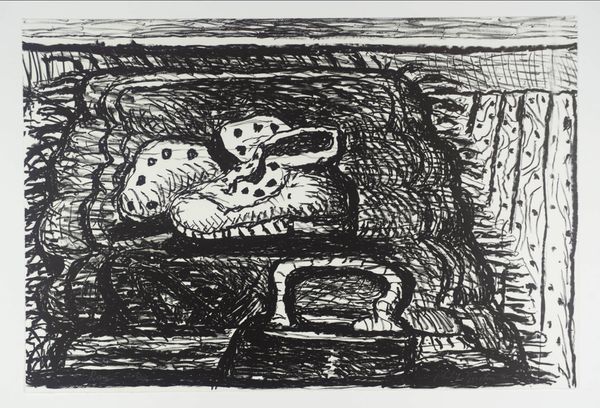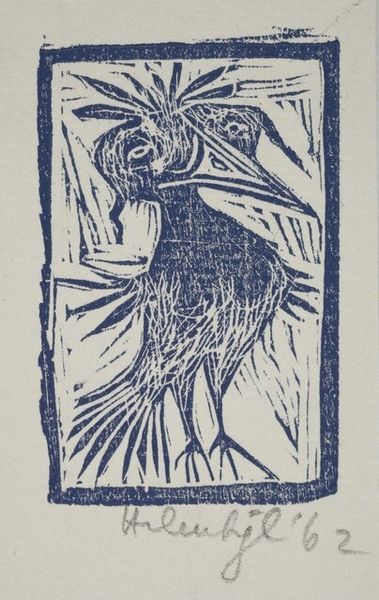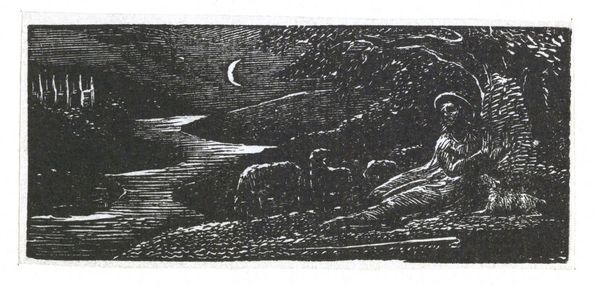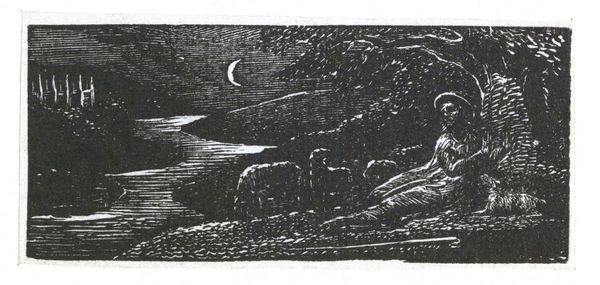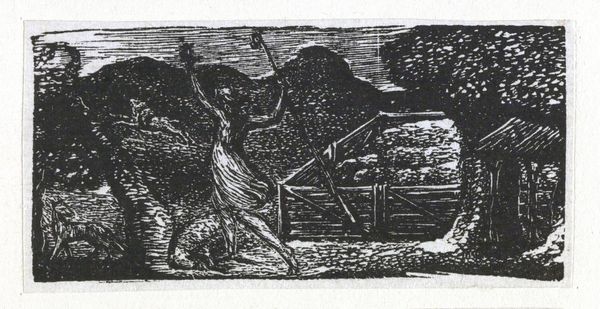
Dimensions: image: 34 x 73 mm
Copyright: NaN
Editor: This is William Blake's wood engraving, "The Blighted Corn." It's tiny, but the composition feels so monumental and ominous. What's your take on this piece? Curator: Blake conjures a world pregnant with symbolic weight. The blasted tree, writhing against a celestial backdrop, feels like a metaphor for spiritual struggle. Do you sense the pull between earthly decay and heavenly hope? Editor: Absolutely! It's like the tree is reaching, but the moon feels distant and cold. Is that darkness typical of Blake? Curator: Blake wrestled with darkness, but always sought light. This image, stark as it is, invites us to ponder the cyclical nature of destruction and renewal. It's a deeply personal vision, etched into a miniature universe. Editor: I see it now. There's a strange beauty in the decay. Curator: Indeed. Blake reminds us that even in the blighted, something profound can take root.
Comments
tate 6 months ago
⋮
http://www.tate.org.uk/art/artworks/blake-the-blighted-corn-a00116
Join the conversation
Join millions of artists and users on Artera today and experience the ultimate creative platform.
tate 6 months ago
⋮
Samuel Palmer was the most important of Blake’s followers, known as the Ancients. Palmer first met Blake in 1824. He described these illustrations to an imitation of the First Eclogue by the Roman poet Virgil as ‘visions of little dells, and nooks, and corners of Paradise’. Palmer’s art was particularly influenced by them. These prints appealed to the Ancients because they were the result of Blake’s experiments with a new medium; he had never engraved on wood before. Even at the age of sixty-four he wanted to make further explorations in his art. Gallery label, August 2004
